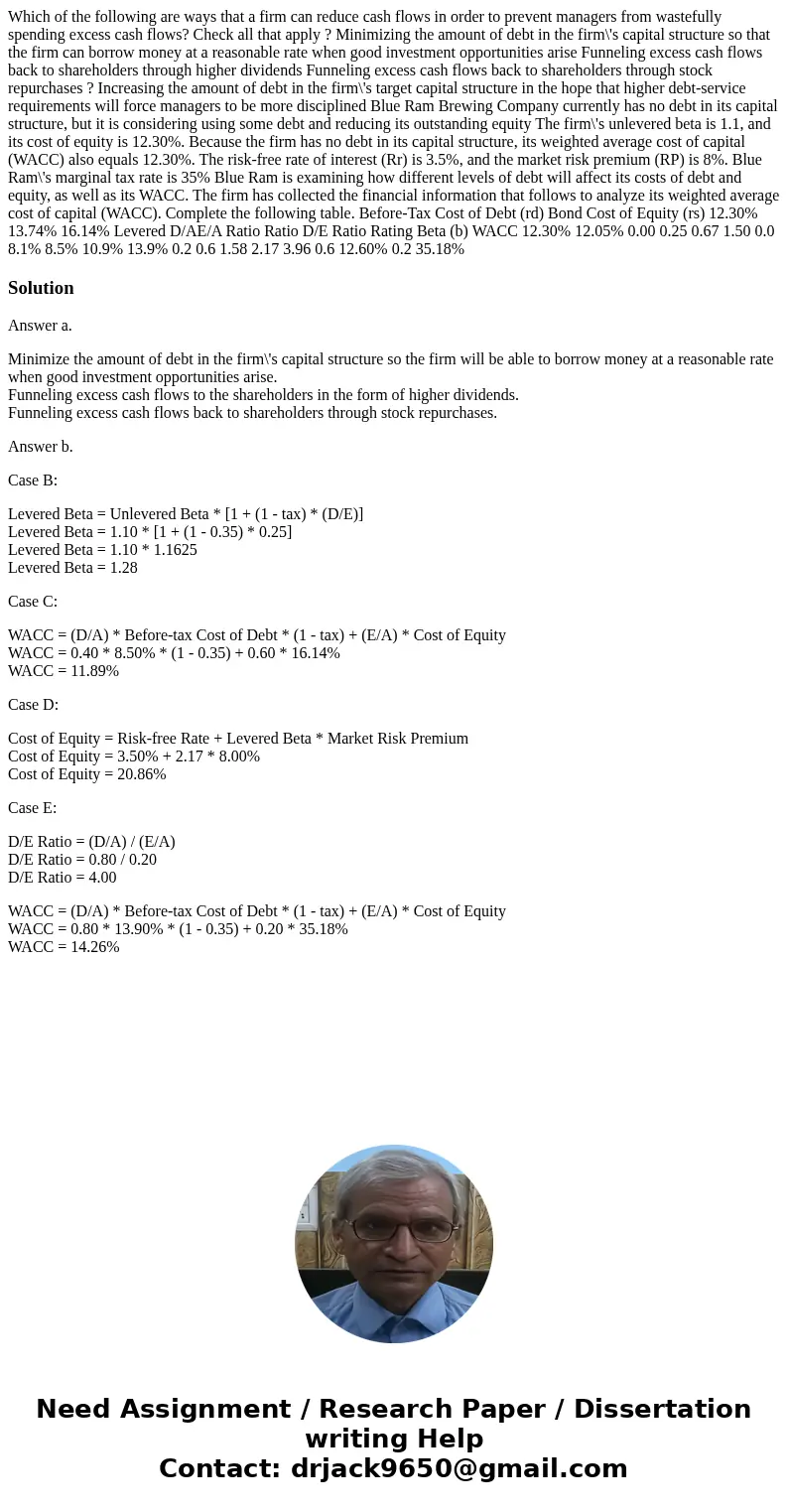Which of the following are ways that a firm can reduce cash flows in order to prevent managers from wastefully spending excess cash flows? Check all that apply ? Minimizing the amount of debt in the firm\'s capital structure so that the firm can borrow money at a reasonable rate when good investment opportunities arise Funneling excess cash flows back to shareholders through higher dividends Funneling excess cash flows back to shareholders through stock repurchases ? Increasing the amount of debt in the firm\'s target capital structure in the hope that higher debt-service requirements will force managers to be more disciplined Blue Ram Brewing Company currently has no debt in its capital structure, but it is considering using some debt and reducing its outstanding equity The firm\'s unlevered beta is 1.1, and its cost of equity is 12.30%. Because the firm has no debt in its capital structure, its weighted average cost of capital (WACC) also equals 12.30%. The risk-free rate of interest (Rr) is 3.5%, and the market risk premium (RP) is 8%. Blue Ram\'s marginal tax rate is 35% Blue Ram is examining how different levels of debt will affect its costs of debt and equity, as well as its WACC. The firm has collected the financial information that follows to analyze its weighted average cost of capital (WACC). Complete the following table. Before-Tax Cost of Debt (rd) Bond Cost of Equity (rs) 12.30% 13.74% 16.14% Levered D/AE/A Ratio Ratio D/E Ratio Rating Beta (b) WACC 12.30% 12.05% 0.00 0.25 0.67 1.50 0.0 8.1% 8.5% 10.9% 13.9% 0.2 0.6 1.58 2.17 3.96 0.6 12.60% 0.2 35.18%
Answer a.
Minimize the amount of debt in the firm\'s capital structure so the firm will be able to borrow money at a reasonable rate when good investment opportunities arise.
Funneling excess cash flows to the shareholders in the form of higher dividends.
Funneling excess cash flows back to shareholders through stock repurchases.
Answer b.
Case B:
Levered Beta = Unlevered Beta * [1 + (1 - tax) * (D/E)]
Levered Beta = 1.10 * [1 + (1 - 0.35) * 0.25]
Levered Beta = 1.10 * 1.1625
Levered Beta = 1.28
Case C:
WACC = (D/A) * Before-tax Cost of Debt * (1 - tax) + (E/A) * Cost of Equity
WACC = 0.40 * 8.50% * (1 - 0.35) + 0.60 * 16.14%
WACC = 11.89%
Case D:
Cost of Equity = Risk-free Rate + Levered Beta * Market Risk Premium
Cost of Equity = 3.50% + 2.17 * 8.00%
Cost of Equity = 20.86%
Case E:
D/E Ratio = (D/A) / (E/A)
D/E Ratio = 0.80 / 0.20
D/E Ratio = 4.00
WACC = (D/A) * Before-tax Cost of Debt * (1 - tax) + (E/A) * Cost of Equity
WACC = 0.80 * 13.90% * (1 - 0.35) + 0.20 * 35.18%
WACC = 14.26%

 Homework Sourse
Homework Sourse